1888 Stabenovka
The Rudolf Stabenow – Metallwaren company, in an industrial premises which today houses the PONEC Theatre (the building opened in 1888), specialized in rolling sheet metal, production of wires, rods, pipes, screws, nuts, gutters and brass fittings for stoves. The factory was built by Gustav Rudolg Stabenow in 1860 around the former Miranka vineyard (now a protected monument; the vineyard existed here at least from the 16th to the 19th century) to the Krenn family estate on the west side (today Krenovka – a nascent art centre).
Gustav Rudolf Stabenow (1825 – 1905) was an ironmaker, a trader in machine products and an entrepreneur in metallurgy, the founder of a machine factory in Prague's Žižkov district.
Originally an ironworker and copperworker, he came to Prague in 1860 from Lower Silesia. He married Marie, née Krakhardtová, with whom he had six children. He founded a metal workshop in Žižkov, which he expanded into a machining factory in 1888, in a newly built Renaissance-style building with a three-axis portico. His production program was briefly carried on by his son Rudolf Kryštof Wilhelm Stabenow, also a manufacturer.
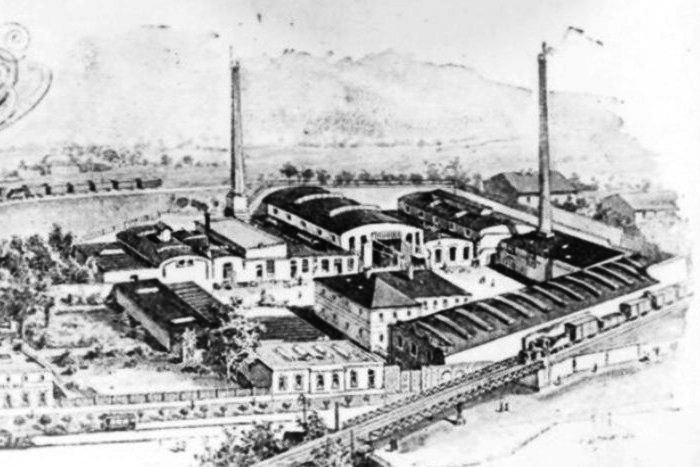
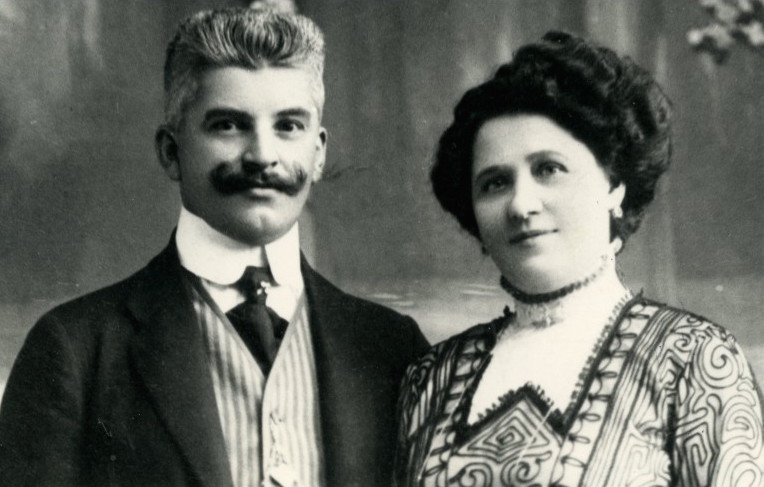
(photo: František Ponec with his wife –Čvančar brothers collection)
1906 - 1910
The "Stabenovka" moves to Čelákovice. František Ponec, a pioneer of Czech cinema, travels around Libeň, Karlín, Žižkov, Vinohrady, Smíchov and other districts and villages of the Kingdom of Bohemia with a mobile cinema (then also called the "electric theatre of live photographs") and negotiates with the Žižkov municipality, which bought the Stabenovka building in 1909, to use one of the factory buildings for a permanent cinema.
Cinema pioneer František Ponec (3 April 1869 – 3 April 1946) was a native of Mladá Boleslav. The trained confectioner first worked as an archive clerk at Ruston's factory. As a cinema enthusiast, in 1903, together with Zdeněk Körber, he became the co-owner of the travelling cinema The Royal Bioskop, with which he travelled throughout the Czech lands. From 1908, Ponec became independent and named the company Ponec's Royal Bioscope. Until the end of 1909, he also screened films in the hall of the Na knížecí Inn in Smíchov, but due to the planned demolition of the building, he rented the building of the former Stabenowa factory hall in Žižkov, at the foot of the so-called Gallows Hill (Šibeniční vrch), which he had rebuilt according to the design of architect Karel Mašek. On 3 September 1910, the Ponec's Royal Bioscope was ceremoniously opened, the third permanent cinema in Žižkov, which Ponec operated here for another ten years. After that, his contract and licence were terminated and the cinema continued to be operated by the municipality itself, from 1929 under the new name Žižkov Municipal Bio. Besides owning a cinematographic company, Ponec also produced a number of film reports, which he soon screened in his cinema. Several of them have survived to the present day. In 1912, he co-founded the newly formed Association of Czech Cinema Owners and for many years he was also a member of the committee. After leaving the Žižkov building, in 1921 Ponec tried to re-establish himself in Písek, but without success. Shortly afterwards, he began suffering from a protracted nerve disease. On 19 March 1946, Ponec was awarded for his contributions to the development of cinematography on the occasion of the 50 Years of Cinema exhibition. Shortly after his death, the Žižkov cinema was ceremoniously renamed Bio Ponec, under which it operated until it closed in 1968. Since 2001, the building has been the home of the PONEC dance theatre.
1910 – 1929 Ponec's Royal Bioscope
In September 1910, Ponec's Royal Bioscope was inaugurated. Subsequently, the architect and academic painter Karel Vítězslav Mašek created a three-part façade in front of the factory hall. This is an early example of a factory converted to cultural purposes. František Ponec had a licence to operate a cinema for 10 years. After that, the cinema was run by the municipality of Žižkov and Ponec suffered a mental breakdown, especially after the cinema was renamed in 1929.
In its original form, the theatre measured 24 × 12.5 metres on a sloping floor with 26 rows, 19 of them with seats, and a middle aisle, while the first ten rows (or cheaper seats) were furnished with benches. In the back there were boxes: two in each corner and two in the middle, under a projection booth with two cameras. In front of the projection screen there was a slightly deepened orchestra pit measuring 5 × 2.45 metres.
1929 – 1946 Žižkov Municipal Bio
In 1929, the municipality renamed the cinema the Žižkov Municipal Bio and continued to operate it. František Ponec struggles with a protracted nervous disease.
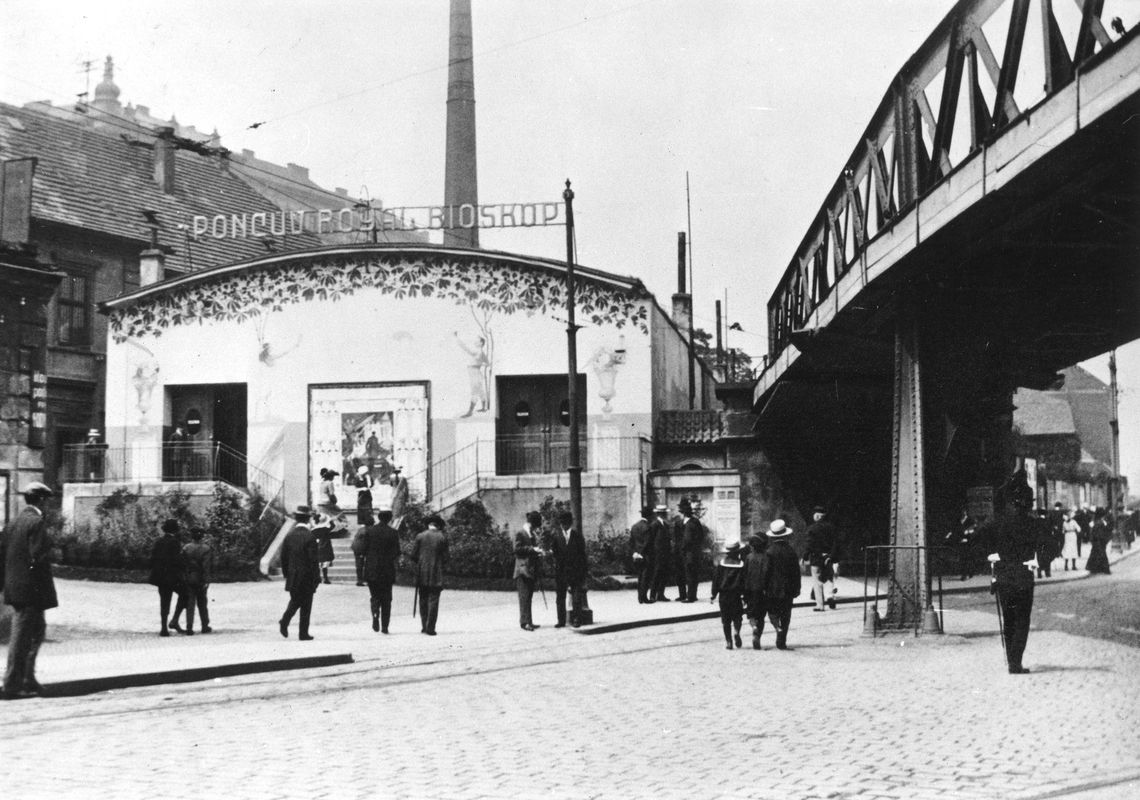

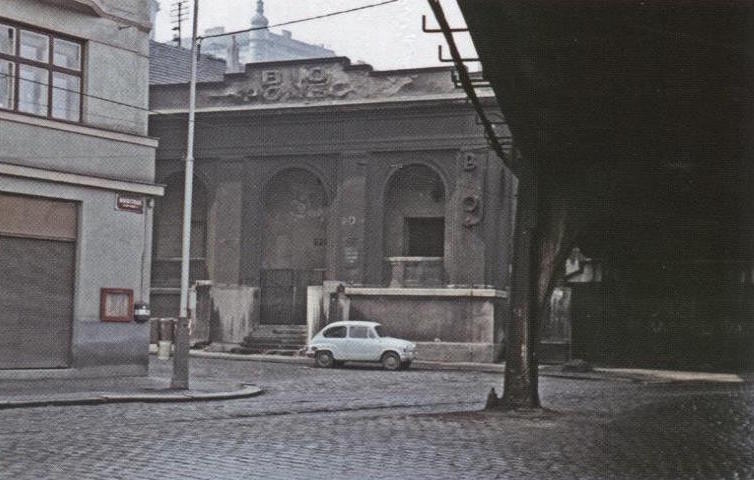
(Ponec 1970, photo Oldřich Janovský)
1946 – 1968 Bio Ponec
In March 1946, František Ponec was recognized for his pioneering work on the occasion of the 50 Years of Cinema exhibition. He died a few days later, on his 77th birthday. In his honour, the cinema was renamed Bio Ponec. Films were screened in the popular cinema, which is remembered fondly not only by Žižkov natives (Jaroslav Marvan, Jiří Krampol, Luděk Sobota, Ondřej Neff, etc.) until 1968.
1968 – 1998 Warehouse of the Film Company
The cinema was closed, and the building fell into disrepair, used as a warehouse for the Film Company of the City of Prague. The building was owned by the City of Prague, which entrusted it to the City District of Prague 3.
1998 – 2001 Tanec Praha - reconstruction
In September 1998, Tanec Praha won a public tender to use the building for 25 years. It embarked on a major reconstruction, including the addition of a basement and the construction of a new steel roof structure almost one metre higher. The construction according to a design by architect Jitka Čeňková in cooperation with architect Benešová is carried out by Level Holding. On 10 September 2001, PONEC – the dance venue is inaugurated.
Most of the theatre auditorium measuring 12 × 22 metres is occupied by a flat floor with a partial basement, covered with a sprung dance floor and ballet floor. The seven-level grandstand, which rises steeply, offers 110 seats in its basic arrangement. The mobile elements of its construction enable the setup to be changed and, with the use of backup elements, the capacity to be increased by up to 200 seats. In the left half of the highest level of the grandstand there is a technical booth, from which it is also possible to project films. The side walls of the auditorium are divided by flat pilaster strips, the open steel truss (newly inserted during the reconstruction) carries the roof segment profile. Beneath it is a 11.8 × 9.2 metre truss frame with spotlights and speakers.
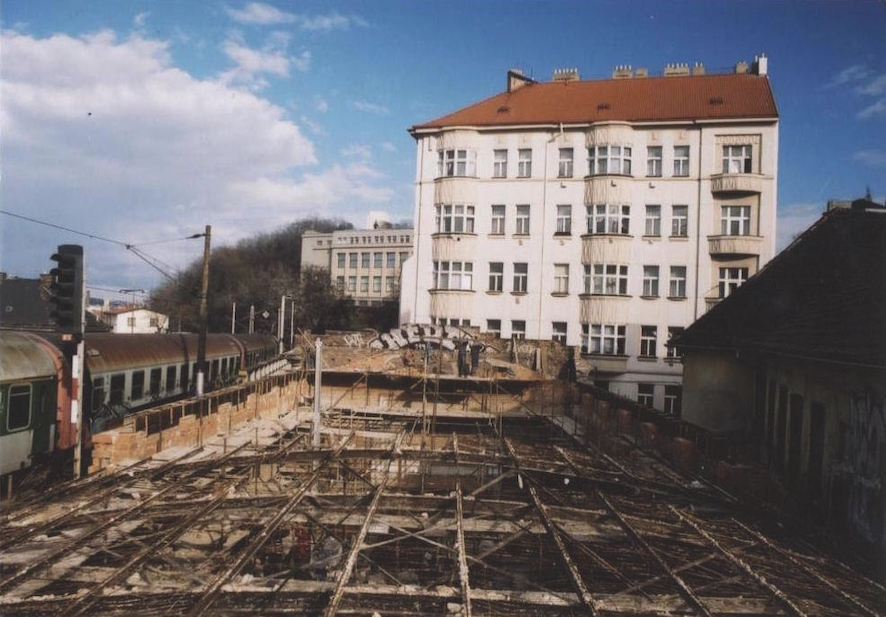
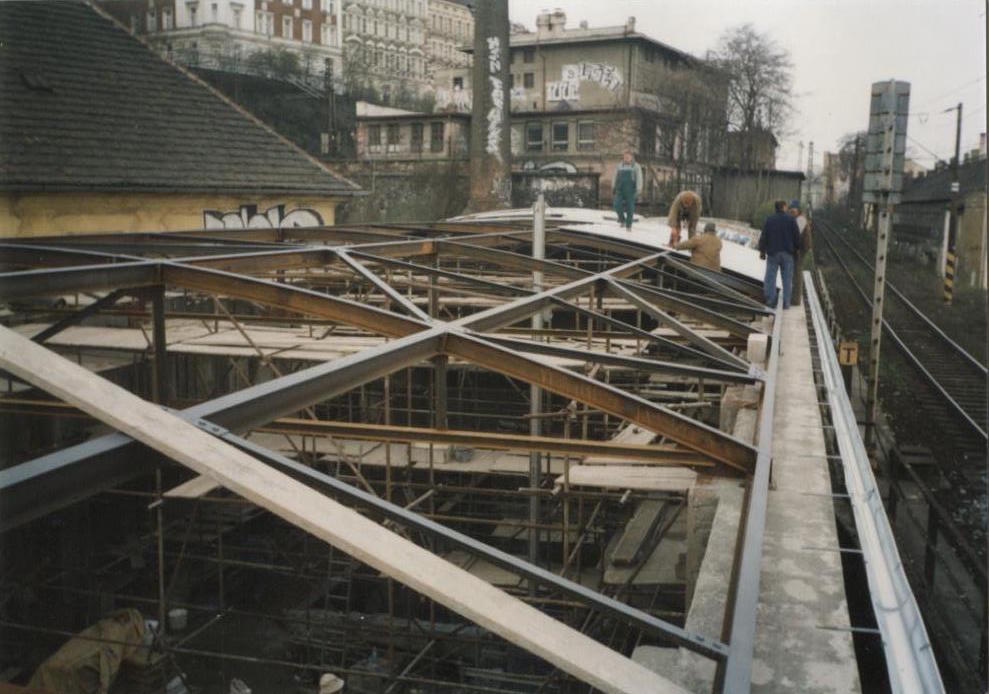
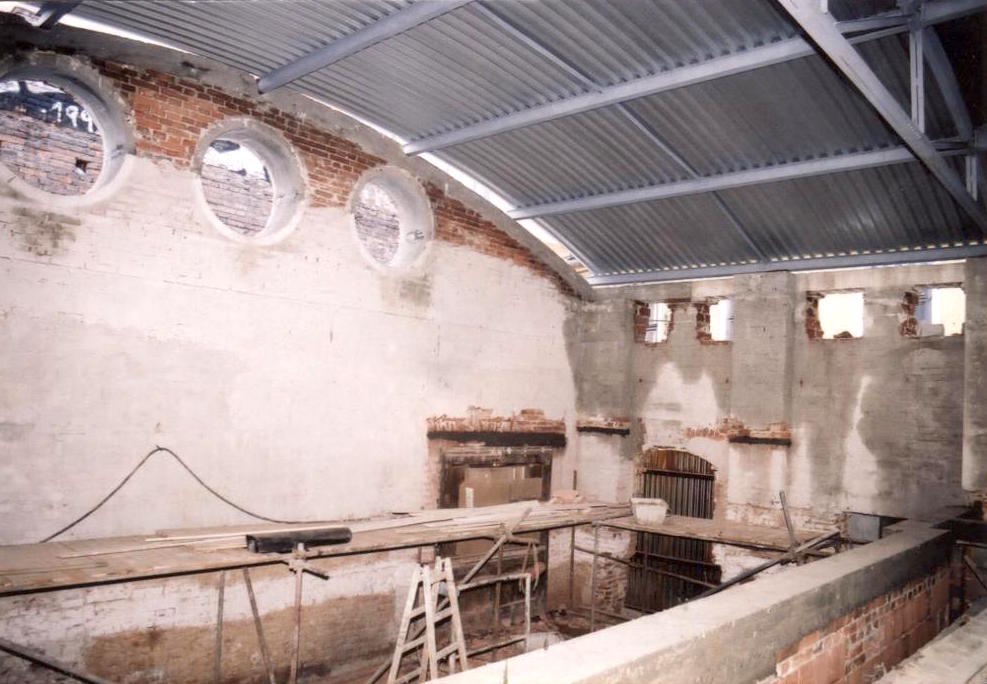
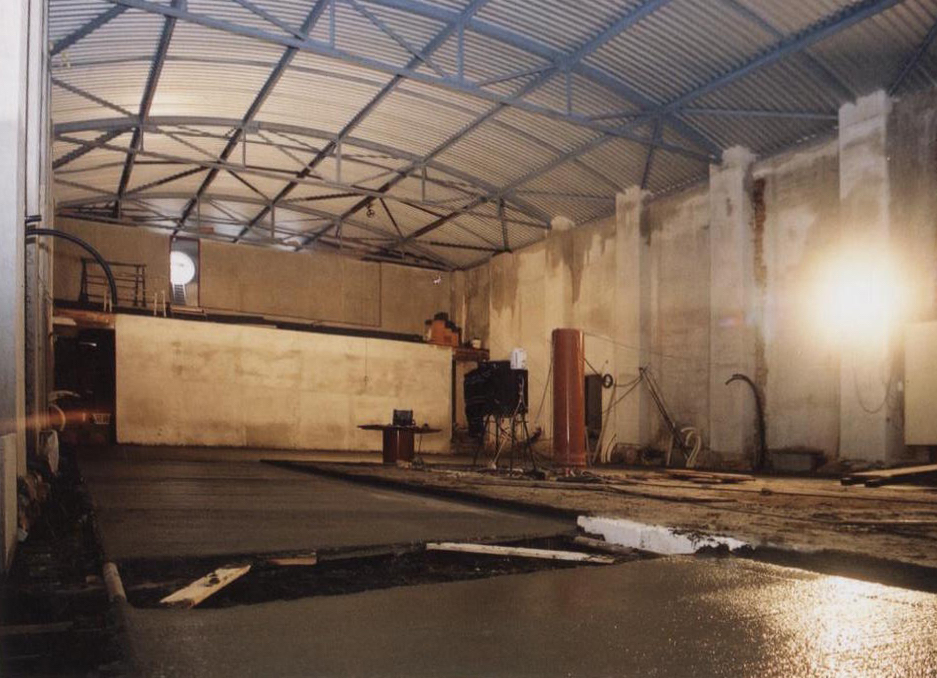
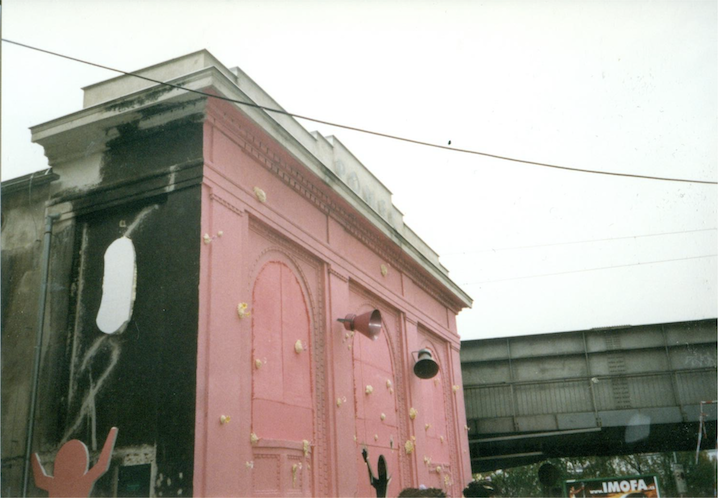
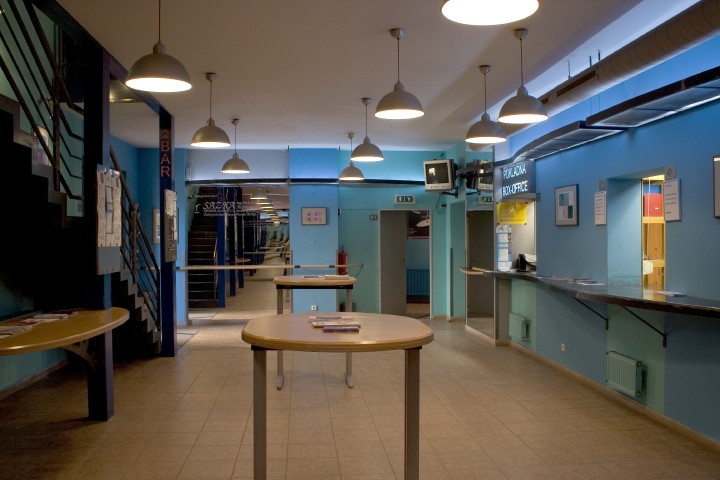
The original foyer of the PONEC Theatre after the completion of the 2001 reconstruction
Since 2001 PONEC – the dance venue
Tanec Praha opens the first permanent stage in the Czech Republic for contemporary dance and movement theatre.
2002 PONEC with 4 Days in Motion
Krištof Kintera throws himself into the original modification of the façade before its reconstruction for the purposes of organizing the 7thyear of the 2+4 Days in Motion Festival. Commentary in the press:
However, the organizational team led by Pavel Štorek did what it could to transform Ponec into a painting for four days, at least where possible. The architect Krištof Kintera painted the façade of the peeling Ponec pink and decorated it with an entrance staircase like a marzipan cake, which was entered through a huge silhouette in the shape of a human figure, how otherwise than in motion.
2002/2003 PONEC with Archa in one boat
After extensive flooding in the summer of 2002, PONEC provided space throughout the season for more than 50 performances and events of the Archa Theatre – Archa Floats! 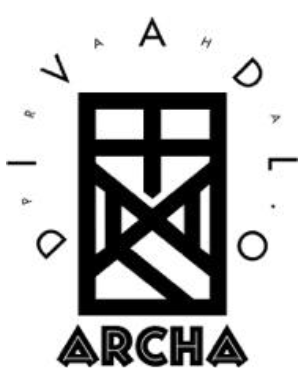
Archa Theatre press information
The Archa Theatre will continue to present its performances and concerts during the reconstruction
Prague – 10 September – All performances and concerts in the flood "exile" – outside the premises of the Archa Theatre – will receive the secondary title "Archa Floats!". This name symbolizes that the theatre, as a production house and organizer of cultural events, does not cease to function artistically during the reconstruction. That while it may not be operating in its home port, it is still able to present the performances to which its audience is accustomed. The main venue where Archa will operate several times a month at least until December 2002 is the Ponec Theatre. This space, which is very close to the Archa Theatre due to its focus on contemporary dance, was generously provided by the Tanec Praha civic association…
2003 PONEC – dance venue
Tanec Praha obtains additional investment funds and completes the reconstruction of PONEC, including the façade and technical equipment (the restoration of which is a permanent process). The creator of the paintings in the entrance loggia and vestibule is Jan Kaláb (Point 1).


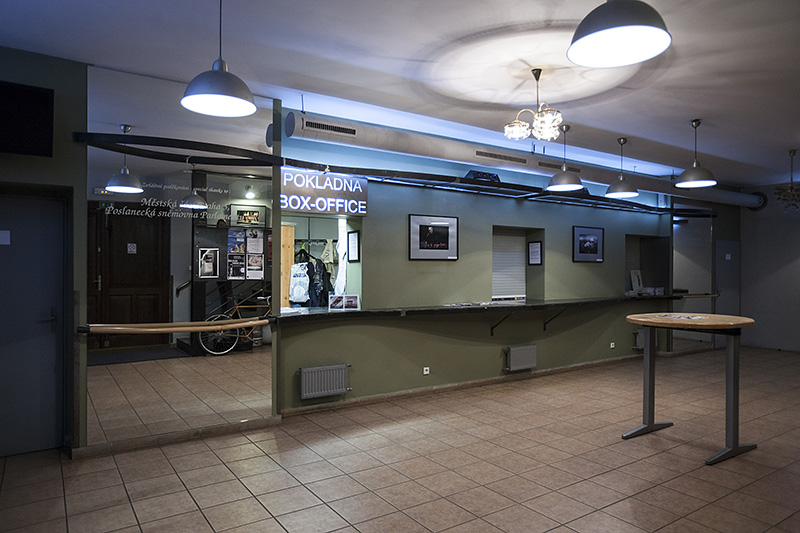
Modification of the foyer in 2015
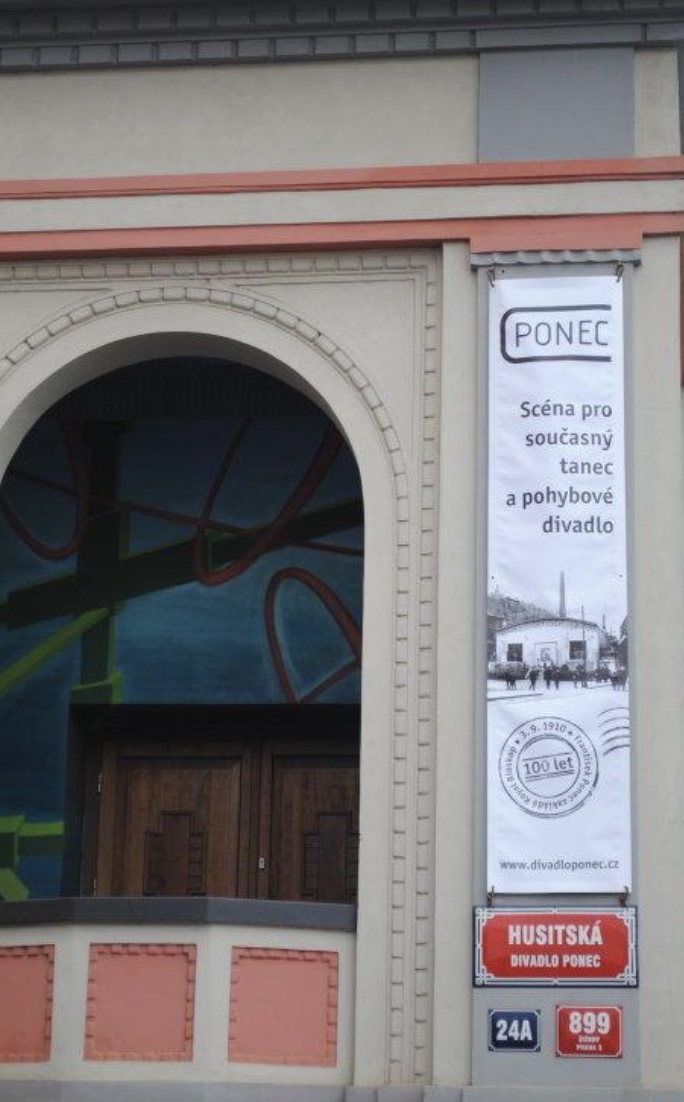
PONEC 2010 (100 years since the reconversion of the factory for cultural purposes)
• • • • • • • • • • • • •
PONEC – the dance venue is operated by Tanec Praha z. ú. based on a lease agreement with the District of Prague 3, with the financial support of the City of Prague, the Ministry of Culture of the Czech Republic and a number of other partners.
Tanec Praha z.ú. is a member of various national and international networks, such as IETM and Aerowaves. Since 2015, PONEC has been part of the prestigious EDN – European Dancehouse Network. The involvement of Tanec Praha in European projects, such as Be SpectACTive !, Dancing Museums, Shape It ! and Micro and Macro Dramaturgies in Dance is of fundamental importance for the creation of its own productions, as well as the development of work with the audience.
